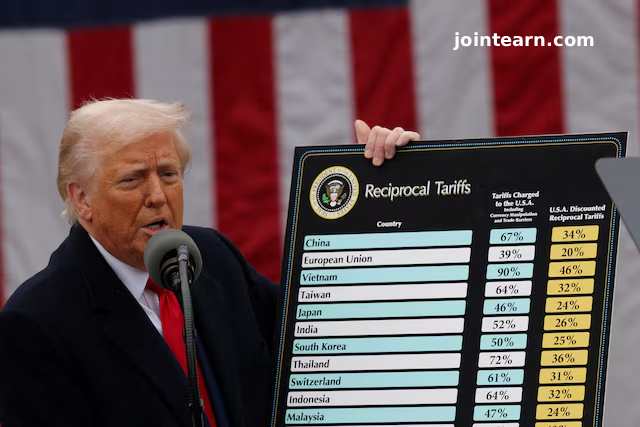
The U.S. Supreme Court is set to hear arguments Wednesday in a major case that could redefine presidential authority and reshape global trade. At issue is former President Donald Trump’s use of emergency powers to impose sweeping tariffs — a move lower courts have ruled exceeded his legal authority.
Background of the Dispute
Trump invoked the International Emergency Economic Powers Act (IEEPA) of 1977 — a law designed for true national emergencies — to levy tariffs on nearly all U.S. trading partners. The law empowers presidents to regulate commerce during emergencies but does not explicitly mention tariffs.
Multiple lawsuits were filed by 12 states and several businesses, many of them importers, claiming that Trump’s action unlawfully bypassed Congress. Under the U.S. Constitution, the power to impose tariffs and taxes rests with Congress, not the president.
Arguments before the Supreme Court are scheduled to begin at 10 a.m. EST (1500 GMT). The justices’ eventual decision could have sweeping consequences for both U.S. economic policy and the balance of power between the White House and Congress.
Trump Pressures the Court
Trump, who has treated tariffs as a cornerstone of his economic and foreign policy agenda, has publicly urged the justices — six of whom form a conservative majority — to uphold his measures. In a social media post on Sunday, he warned that overturning the tariffs would leave the country “defenseless” and could lead to “the ruination of our Nation.”
Treasury Secretary Scott Bessent, signaling the administration’s strong interest, is expected to attend the hearing in person. Trump had considered attending but ultimately decided against it.
Even if the Court strikes down the tariffs, Bessent told Reuters, the administration intends to sustain them by invoking other legal authorities. The White House has also requested that the Court issue its decision quickly — a rare move, as rulings often take months.
Stretching Presidential Authority
Trump’s use of IEEPA represents an unprecedented expansion of executive power. Historically, the act has been used to freeze assets or impose sanctions against hostile nations, not to rewrite trade policy.
Since returning to office, Trump has frequently tested the limits of his authority — from hardline immigration crackdowns and federal agency shake-ups to deploying troops domestically. His Justice Department argues that IEEPA’s language allowing presidents to “regulate” imports during emergencies provides legal cover for the tariffs.
The tariffs have generated an estimated $89 billion between February and September 2025, according to U.S. Customs and Border Protection. Other tariffs enacted under different statutes are not part of this case.
The Legal Stakes
Lower courts, including the U.S. Court of Appeals for the Federal Circuit, have twice ruled against Trump. Judges found that Congress never intended IEEPA to grant presidents open-ended tariff authority and said such an interpretation violates the Supreme Court’s “major questions” doctrine — which requires clear congressional approval for policies of broad national impact.
In its ruling, the Federal Circuit wrote:
“It seems unlikely that Congress intended, in enacting IEEPA, to depart from its past practice and grant the president unlimited authority to impose tariffs.”
This doctrine has previously been used by the Supreme Court to block several major initiatives, including those under President Joe Biden.
Global Implications
Trump’s tariffs have reignited trade tensions worldwide since his return to the presidency in January. They have rattled markets, strained diplomatic relationships, and fueled uncertainty among global investors.
Citing “national emergency” conditions, Trump has used tariffs as leverage against China, Canada, Mexico, and other countries — including to pressure them on issues like drug trafficking and trade imbalances. He has also used tariffs to punish nations for unrelated political actions, such as Brazil’s prosecution of former President Jair Bolsonaro and India’s purchases of Russian oil.
What Comes Next
The Supreme Court’s decision will determine not only the fate of Trump’s tariffs but also the future scope of presidential emergency powers. If the justices side with Trump, it could set a precedent allowing future presidents far greater flexibility in economic policymaking. If they rule against him, it could reaffirm Congress’s control over trade and taxation.
Either outcome will have profound effects on U.S. foreign relations, domestic industries, and the global economy.


Leave a Reply